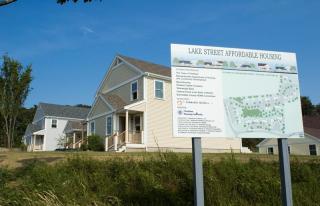CPA Income Limits

The CPA uses income limits set by the United States Department of Housing and Urban Development (HUD) for two purposes; 1) to determine eligibility for the low-income or low- and moderate-income senior exemption from the CPA surcharge, if a given community has adopted CPA with that optional exemption, and 2) to determine eligibility for community housing units or programs acquired, created, or funded with CPA funds. For more details about these income limits, and how they are used in each situation, see below.
Determining Eligibility for the Low-income and Low- and Moderate-income Senior CPA Exemption
In communities that have adopted the low-income and low- and moderate-income senior exemption to the CPA surcharge, property owners must submit an application annually to determine whether they qualify to receive this exemption. Homeowners can contact the Assessor’s Office at their city or town hall to obtain an application. The CPA income guidelines used to determine eligibility for this exemption are derived from the HUD areawide median income figures. Persons and families whose annual income is less than 80 percent of the areawide median income qualify as low-income. Persons aged 60 or over whose annual income is less than 100 percent of the areawide median income qualify as moderate-income seniors. These figures are updated annually.
- See whether your community has adopted the low-income and low- and moderate-income senior exemption
- See the CPA low and moderate income guidelines for your community.
Determining Eligibility for CPA-funded Community Housing Units or Programs
HUD income guidelines are used to determine who is eligible to live in the affordable housing units or be served by the housing programs developed by communities with their CPA funds. Housing developed with CPA funds may be offered to those persons and families whose annual income is less than 100 percent of the areawide median income, as determined by HUD.
Please note, though, that communities may choose to limit certain housing units created with CPA funds to those persons and families earning less than 80 percent of the areawide median income annually, as determined by HUD. This allows communities to include these units on their Subsidized Housing Inventory (SHI) with the state.
The income limits vary by community and size of family, and the links below contain spreadsheets of the low and moderate income figures for each city and town in the state. An important note about the 80 per cent income figures on the spreadsheet: There is a difference in the 80 percent figure stipulated by the CPA legislation, which is used on the spreadsheet, and the 80 percent figure used by HUD. The state's Massachusetts Executive Office of Housing and Livable Communities (EOHLC) uses the HUD number to determine if the unit will qualify for the state's Subsidized Housing Inventory. Communities should check with EOHLC prior to setting the income limits for their CPA low-income housing developments to be sure that EOHLC will include the units on the SHI. Contact EOHLC's main office at 617-573-1100 for help.
To see the maximum income limits for residents who will occupy CPA-funded community housing developments in your community, view the CPA low-income housing limits (80 per cent of areawide median income) and the moderate income housing limits (100 per cent of areawide median income) charts. To read more about CPA and eligible affordable housing projects, click here.
Nov. 2020

